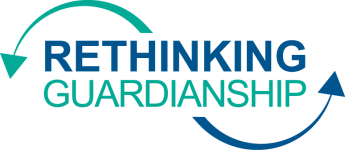This post is a re-published article dated October 1, 2023 from the Home and Community-Based Services Clearinghouse
Background
Nearly one million households in the United States include adults with intellectual and developmental disabilities (I/DD) living with and supported by an aging caregiver.1 Given national trends from institutional services towards home and community-based services (HCBS), the growing expectation by individuals with I/DD of living in the community, as well as population trends, experts expect increases in the number of people living at home with aging caregivers. Increases in the number of people with I/DD living at home with aging caregivers will also increase demand for state- and federally- funded services, primarily Medicaid state plan and HCBS waiver programs.2
Most family members supporting an adult with I/DD are parents.3 Adults with I/DD often receive support from their parents and caregivers throughout their lives. As parents and caregivers age, they may become unable to support their adult child to the same extent because of illness or other health concerns. Other aging parents and caregivers may remain at home and require new supports to meet their own needs and those of the person they support. To assist state Medicaid and partner agencies to address the needs of adults with I/DD living with and supported by aging parents and other caregivers, CMS developed the following resources.
Resources
- State Spotlights: Supporting Adults with I/DD and Their Aging Caregivers is intended to support state Medicaid and partner agencies in their efforts to develop, implement, and expand innovative strategies for supporting adults with I/DD living with and cared for by aging caregivers. The resource focuses on interagency partnerships and relationships, engagement and navigation supports, person- and family-centered systems of support, and planning for the future.
- How State Agencies Can Anticipate and Meet the Needs of Adults with I/DD and Their Aging Caregivers describes state policies and practices for understanding current and future service system needs for serving adults with I/DD and aging caregivers.
- State Policies and Practices to Support Person-Centered Planning Across the Lifespan for Individuals with I/DD and Their Aging Caregivers describes policies and practices for states to implement person-centered planning processes consistent with CMS requirements that support individuals with I/DD and their families to plan across their lifespans.
- State Policies and Practices to Support Aging Caregivers of Adults with I/DD provides strategies for states to consider for assessing and addressing the needs of caregivers of adults with I/DD

References
[1] Fujiura, G. T. (2012). Structure of Intellectual and Developmental Disabilities Households in the United States: Demographics of the Family in 2010. Presented at AAIDD 136th Annual Meeting, Charlotte, NC.
[2] Service and Support Needs of Adults Aging with Intellectual/Developmental Disabilities, U.S. Senate Committee on Aging Working and Aging with Disabilities, 115th Cong. (2017) (Testimony of Tamar Heller).
[3] National Core Indicators. (2019). 2018-19 National Adult Family Survey Final Report.

